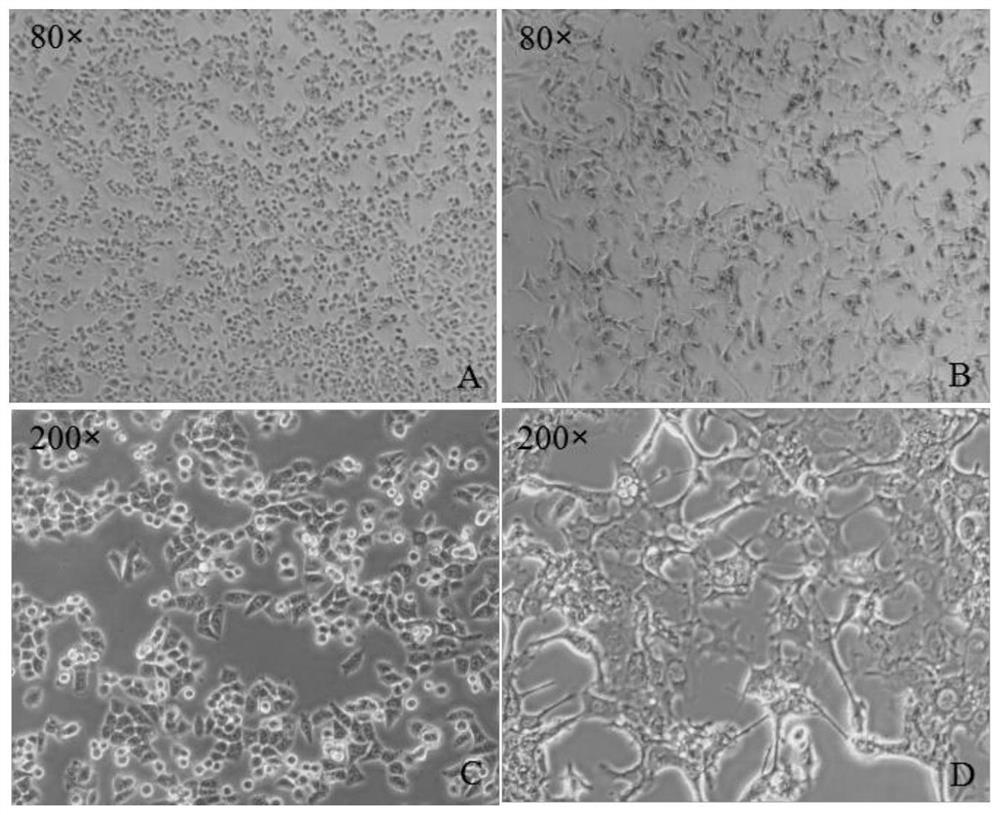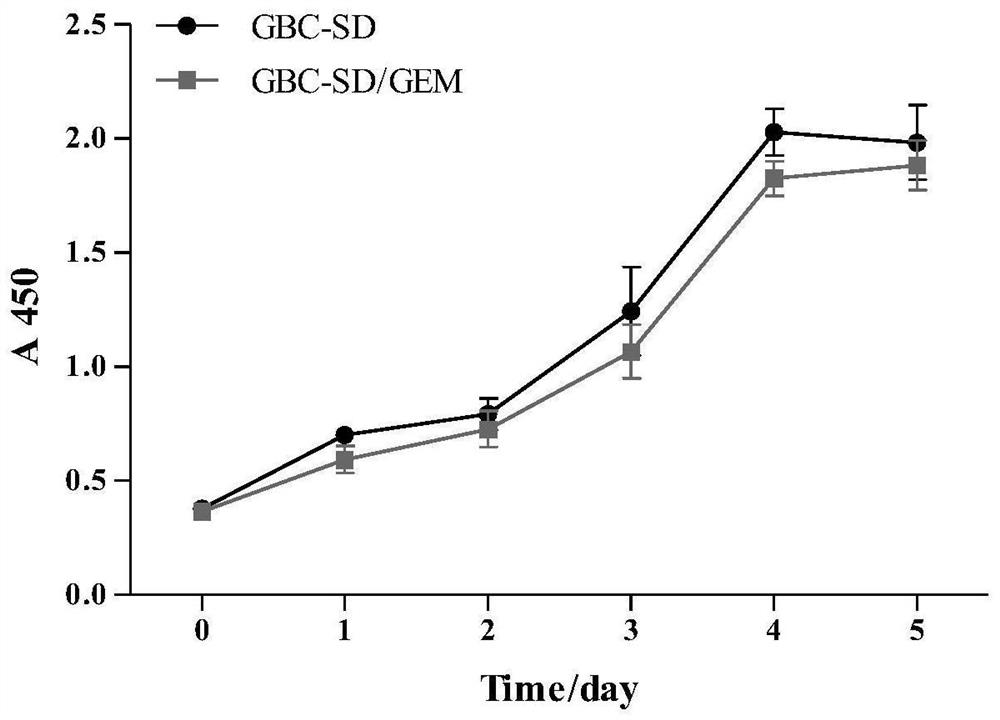A method for preparing gemcitabine drug-resistant cell line of human gallbladder cancer
A gemcitabine and drug-resistant cell technology, applied in the field of bioengineering, can solve problems such as drug resistance, lack of drug-resistant cell lines, lack of systematic research, etc., and achieve the effect of simple and easy method and short establishment time.
- Summary
- Abstract
- Description
- Claims
- Application Information
AI Technical Summary
Problems solved by technology
Method used
Image
Examples
Embodiment 1
[0020] Example 1: Induction of drug-resistant cell lines
[0021] The drug resistance of gallbladder cancer cells was induced by high-dose pulse combined with step-up dose increase. Human gallbladder cancer cells GBC-SD (BNF-2472) and SGC-996 (JN-C0997) in the logarithmic growth phase (both purchased from Shanghai Rongbai Biotechnology Co., Ltd.) were inoculated in a medium containing 20% newborn fetal bovine serum. in DMEM medium at 37°C, 5% CO 2 Culture in a saturated humidity incubator, add gemcitabine to the DMEM medium containing 20% newborn fetal bovine serum for induction, the initial concentration is 0.2 μmol / L, when the cells return to normal growth, the concentration of gemcitabine is increased by 0.1 μmol / L, When the cells can grow normally and be passaged in DMEM medium containing 0.5 μmol / L gemcitabine and containing 20% newborn fetal bovine serum, shock culture with DMEM medium containing 1.0 μmol / L gemcitabine and containing 20% newborn fetal bovine ser...
Embodiment 2
[0022] Embodiment 2: Morphological observation
[0023] The cell morphology of GBC-SD and SGC-996 cells before and after gemcitabine induction was observed with an inverted phase-contrast microscope, and photographed and recorded. Such as figure 1 As shown, the size and shape of GBC-SD cells are relatively regular, with clear outlines and tight intercellular structures, while GBC-SD / GEM cells are irregular in shape, with fuzzy outlines, and many long pseudopodia. Quasi-circular, without obvious edges and corners; such as figure 2 As shown, the SGC-996 cells are regular polygons and closely arranged, while the SGC-996 / GEM cells look messy, with large intercellular spaces and multiple pseudopodia. In general, the morphology of GBC-SD and SGC-996 cells changed significantly after drug resistance was induced by gemcitabine.
Embodiment 3
[0024] Embodiment 3: the mensuration of growth curve
[0025] GBC-SD, SGC-996 and their corresponding drug-resistant cells in the logarithmic growth phase were digested with trypsin and inoculated in a 96-well culture plate, and the cell density was adjusted to 4×10 4 cells / mL, with 5 replicate wells for each group, placed at 37°C, 5% CO 2 After culturing in the incubator for 24 hours, the absorbance value A of each group at 450nm was measured every day by the CCK-8 method for 5 consecutive days, and the growth curve was drawn with the number of culture days as the abscissa and the absorbance A as the ordinate.
[0026] Such as image 3 As shown, GBC-SD cells grew slowly on day 1-2, entered logarithmic growth phase on day 3, slowed down on day 4, and entered plateau phase. The growth trend of the drug-resistant cell line GBC-SD / GEM was similar to that of GBC-SD was basically the same, and the overall growth was slightly slower; compared with the GBC-SD drug-resistant group, ...
PUM
 Login to View More
Login to View More Abstract
Description
Claims
Application Information
 Login to View More
Login to View More - R&D
- Intellectual Property
- Life Sciences
- Materials
- Tech Scout
- Unparalleled Data Quality
- Higher Quality Content
- 60% Fewer Hallucinations
Browse by: Latest US Patents, China's latest patents, Technical Efficacy Thesaurus, Application Domain, Technology Topic, Popular Technical Reports.
© 2025 PatSnap. All rights reserved.Legal|Privacy policy|Modern Slavery Act Transparency Statement|Sitemap|About US| Contact US: help@patsnap.com



